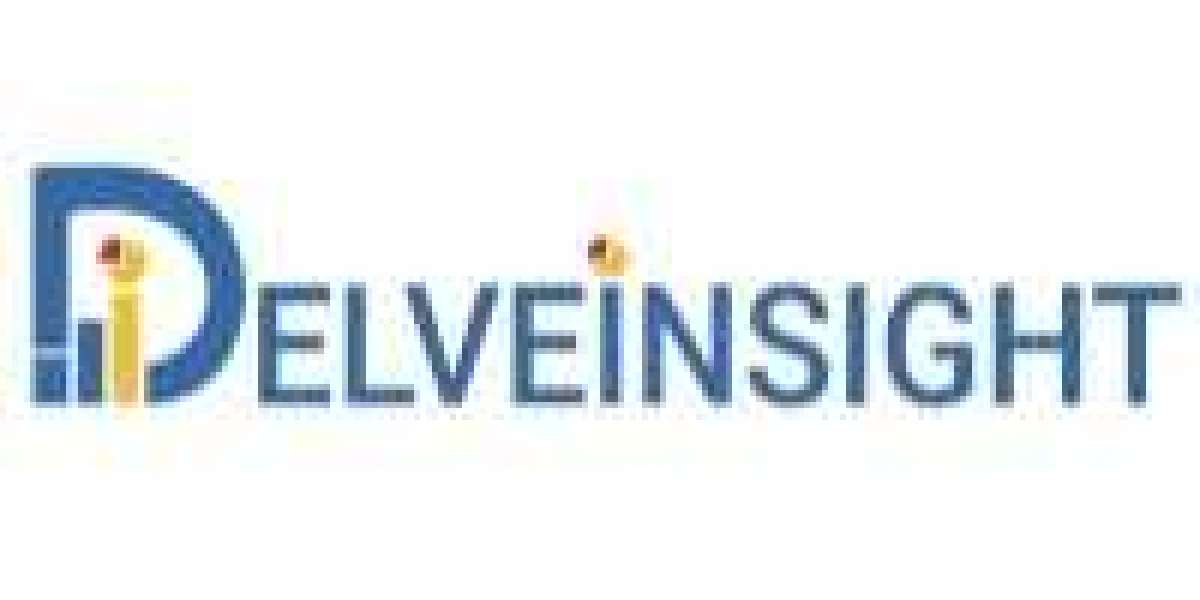Unraveling the Hyperammonemia Market: Key Trends, Challenges, and Future Innovations
Hyperammonemia: An Overview
Hyperammonemia is a metabolic disorder characterized by excessive ammonia levels in the blood. Ammonia, a byproduct of protein metabolism, is primarily processed by the liver and excreted as urea. When its metabolism or excretion is impaired, ammonia accumulates, leading to neurotoxicity and severe complications.
Key Drivers of the Hyperammonemia Market
The hyperammonemia treatment market is expanding due to several critical factors:
- Increasing Prevalence of Urea Cycle Disorders (UCDs): A rise in UCD diagnoses has amplified the demand for effective treatments. Greater awareness and early detection have contributed to this trend.
- Advancements in Research and Development: Progress in RD has resulted in innovative therapies, including gene-based treatments, providing new management options for hyperammonemia.
- Government Initiatives and Healthcare Infrastructure: Supportive policies and infrastructure enhancements have facilitated better diagnosis and treatment availability for hyperammonemia.
- Improved Awareness and Diagnostic Techniques: Greater knowledge among healthcare professionals and the public, combined with technological advancements, has led to earlier detection and intervention.
- Strategic Collaborations and Regulatory Approvals: Partnerships between pharmaceutical companies and regulatory endorsements have broadened treatment options. For instance, in January 2021, Acer Therapeutics and Relief Therapeutics Holding AG collaborated on ACER-001, a sodium phenylbutyrate drug conjugate for UCDs. Later that year, the U.S. FDA accepted ACER-001’s New Drug Application.
As a result, the hyperammonemia treatment market is projected to reach USD 2.1 billion by 2033, with a CAGR of 4.77% from 2023 to 2033.
Challenges Facing the Hyperammonemia Market
Despite market growth, several barriers impact the development and accessibility of effective treatments:
- Limited Awareness and Diagnostic Difficulties
- Hyperammonemia is frequently underdiagnosed or misdiagnosed, especially in mild cases.
- Symptoms overlap with other metabolic and neurological conditions, delaying appropriate treatment.
- A lack of standardized screening programs hinders early intervention.
- High Treatment Costs
- Existing treatments, such as nitrogen-scavenging drugs (e.g., sodium phenylbutyrate, glycerol phenylbutyrate), dietary management, and liver transplants, are expensive.
- Insurance reimbursement challenges and limited access to specialized care increase financial burdens.
- Limited Availability of Approved Therapies
- Few FDA-approved medications exist for hyperammonemia, particularly for rare genetic disorders.
- Clinical trials for new treatments are hindered by recruitment challenges and disease rarity.
- Side Effects and Treatment Burden
- Many current therapies have significant side effects, including gastrointestinal distress and poor palatability, particularly for pediatric patients.
- Dietary restrictions and hospitalizations contribute to the treatment burden on patients and caregivers.
- Regulatory and Market Entry Barriers
- Strict regulatory requirements make drug approvals challenging.
- Developing treatments for rare diseases requires substantial investment with uncertain returns, discouraging pharmaceutical companies.
- Lack of Alternative Treatment Approaches
- Gene therapy and enzyme replacement therapies remain in early-stage research.
- The development of new small-molecule drugs is limited, reducing options for treatment-resistant hyperammonemia.
- Healthcare and Geographic Disparities
- Access to specialized metabolic centers and expert care is inconsistent, particularly in low- and middle-income countries.
- Insufficient awareness among general practitioners contributes to diagnostic delays and inadequate disease management.
Opportunities to Address Market Barriers
- Advancements in Gene and Enzyme Therapies: Research into genetic and enzyme-based treatments may provide long-term solutions.
- Enhanced Screening Programs: Expanding newborn screening for metabolic disorders can improve early detection and intervention.
- Policy and Pricing Reforms: Advocacy for better insurance coverage and orphan drug incentives can improve affordability and accessibility.
- Education for Patients and Healthcare Providers: Awareness campaigns and training programs can facilitate early recognition and better disease management.
Future Outlook for the Hyperammonemia Market
The global hyperammonemia treatment market is anticipated to grow from USD 1.32 billion in 2023 to USD 2.1 billion by 2033, reflecting a CAGR of 4.77%.
Key Market Growth Factors:
- Rising Prevalence of UCDs: Increasing cases of urea cycle disorders drive demand for effective treatments.
- Advancements in Gene Therapy: Research in gene-based solutions presents promising opportunities for hyperammonemia management.
- Government Support: Strengthening healthcare infrastructure and supportive policies enhance market expansion.
Regional Insights:
- North America: The United States is expected to lead, accounting for a 48% market share due to a high prevalence of genetic disorders and favorable reimbursement policies.
- South Asia: The region is projected to witness a CAGR of 4.2% in treatment distribution, indicating substantial growth potential.
Treatment and Distribution Trends:
- Glycerol Phenylbutyrate: Expected to hold around 35.5% of the treatment market by 2033.
- Hospital Pharmacies: Anticipated to contribute approximately 48% of the market share by the end of the forecast period.
Competitive Landscape:
The hyperammonemia market is moderately competitive, with key players focusing on mergers, acquisitions, and collaborations to expand their presence. Notable companies include:
- Bausch Health Companies, Inc.
- Recordati Rare Diseases Inc.
- Lucane Pharma SA
- Acer Therapeutics
- Ultragenyx Pharmaceutical Inc.
- Aeglea BioTherapeutics
- Arcturus Therapeutics Holdings Inc.
- Orpharma Pty Ltd
- Abbott Laboratories
- Selecta Biosciences, Inc.
Recent developments highlight collaborative efforts for drug development and FDA approvals for new treatment candidates, signifying an evolving market.
Evolving Hyperammonemia Treatment Landscape
The treatment paradigm for hyperammonemia is advancing with novel therapies and expanded indications for existing treatments, aiming to enhance patient outcomes and address ammonia-related complications.
Carglumic Acid (Carbaglu®): Traditionally used for N-acetylglutamate synthase (NAGS) deficiency, carglumic acid received FDA approval in January 2021 for acute hyperammonemia associated with propionic acidemia (PA) and methylmalonic acidemia (MMA) in pediatric and adult patients. This makes Carbaglu® the first FDA-approved treatment for hyperammonemia linked to these rare metabolic disorders.
These advancements underscore ongoing efforts to improve hyperammonemia management through innovative therapies and expanded indications.
Get a more detailed overview, at: Hyperammonemia Market Outlook and Forecast
Related Reports by DelveInsight:
Adalimumab Biosimilar Market | Arbovirus Infection Market | Artificial Pancreas Device System Market | Dental Equipment Market | Gluten Sensitivity Market | Hypothyroidism Market | Inflammatory Bowel Disease Market | Mayus Kinase Jak Inhibitors Market | Mild Dry Eye Market | Mucopolysaccharidosis Market | Oncolytic Virus Cancer Therapy Market | Pyoderma Gangrenosum Market | Transdermal Drug Delivery Devices Market | Intrathecal Pumps Market | Hedgehog Pathway Inhibitors Market | Yellow Fever Market | Laryngeal Cancer Market | Female Infertility Market | Gender Dysphoria Market | Chronic Brain Damage Market | Spain Healthcare Outlook Market | Malignant Fibrous Histiocytoma Market | Asthma Diagnostic Devices Market | Chronic Obstructive Pulmonary Disease Treatment Devices Market | Airway Management Devices Market | Cough Assist Devices Market | Pulse Oximeters Market | Hemodialysis Catheter Devices Market | Chronic Spontaneous Urticaria Market | Gender Dysphoria Market | Germany Healthcare Outlook | Biopsy Devices Pipeline Insight | Bacterial Conjunctivitis Market | Infliximab Biosimilar Insight | Eosinophilic Asthma Market | Cushing Syndrome Market | Functional Dyspepsia Market | Peripherally Inserted Central Catheters (PICC) Devices Market
About DelveInsight
DelveInsight is a leading Business Consultant and Market Research firm focused exclusively on life sciences. It supports Pharma companies by providing comprehensive end-to-end solutions to improve their performance.
Contact Info:
Mehul Malhotra
mmalhotra@delveinsight.com
+14699457679



